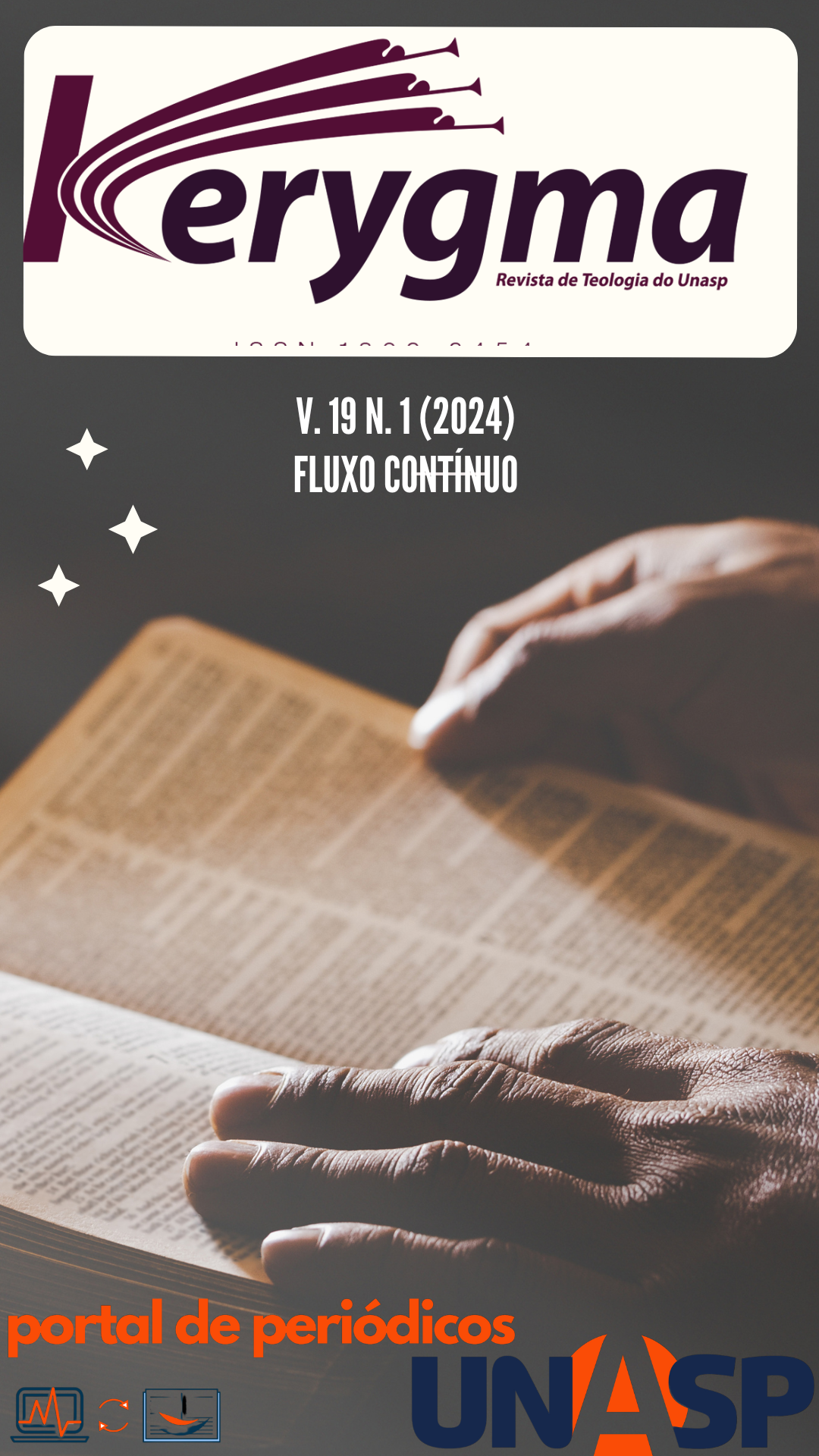Abstract
Prophecies played a central role in biblical history, providing spiritual and political guidance to nations, especially Israel. This article investigates the distinction between true prophets and groups such as diviners and false prophets, analyzing Near Eastern practices like hepatoscopy and omens. The research employs a qualitative approach, comparing prophetic methods and purposes based on biblical and archaeological sources. The findings indicate that biblical prophecy is characterized by its fidelity to God, without reliance on divinatory techniques, while false prophets sought to please the political elite. The study concludes that true prophets often challenged power structures, reaffirming their role as mediators between God and the people. This research contributes to a broader understanding of ancient spiritual practices and the uniqueness of the biblical prophetic tradition.
References
BOSCHUNG, D. Kairos as a figuration of time: a case study. Paderborn: Wilhelm Fink, 2013.
COGAN, M. A new cuneiform text from Megiddo. Israel Exploration Journal, v. 63, n. 2, p. 131-134, 2013.
COHEN, C. Right and left. In: SKOLNIK, Fred (ed.). Encyclopaedia judaica. 2. ed Farmington Hills: Macmillan Reference USA, 2007. v. 17. p. 301-302.
GREENBERG, M. Nebuchadnezzar and the Parting of the Ways: Ezek. 21:26-27. In: COGAN, M.; EPH'AL, I. (ed.). Ah, Assyria…: Studies in Assyrian history and Ancient Near Eastern historiography presented to Hayim Tadmor. Jerusalem: Magnes, 1993. p. 267-271.
HAMORI, E. The prophet and the necromancer: women’s divination for kings. Journal of Biblical Literature, v. 132, n. 4, p. 827-843, 2013.
HESS, R. Israelite religion: an archaeological and biblical survey. Grand Rapids, MI: Baker Academic, 2007.
HOROWITZ, W.; OSHIMA, T.; WINITZER, A.. Hazor 17: another clay liver model. Israel Exploration Journal, v. 60, n. 2, p. 129-132, 2010.
JEFFERS, A. Magic and divination in ancient Palestine and Syria. Leiden: Brill, 1996. (Studies in the History of the Ancient Near East, v. 8).
KALTNER, J.; STULMAN, Louis. Inspired speech: prophecy in the ancient Near East essays in honor of Herbert B. Huffmon. New York: T&T Clark, 2004.
KOCH-WESTENHOLZ, U. Babylonian liver omens. Copenhagen: Museum Tusculanum Press, 2000.
KRUGER, P. A world turned on its head in ancient Near Eastern prophetic literature: a powerful strategy to depict chaotic scenarios. Vetus Testamentum, v. 62, n. 1, p. 58-76, 2012.
LEÃO, D.; FRAZIER, F. Tychè et Pronoia: la marche du monde selon Plutarque. Coimbra: Imprensa da Universidade de Coimbra, 2010. Disponível em: http://dx.doi.org/10.14195/978-989-8281-53-1. Acesso em: 09 set. 2024.
MARTINS, A.; MARTINS, C. History of liver anatomy: Mesopotamian liver clay models. Hepato Pancreato Biliary, v. 15, n. 4, p. 322-323, 2013.
NISSINEN, M.; SEOW, C. L.; RITNER, R. K.; MELCHERT, H. C. Prophets and prophecy in the ancient Near East. 2. ed. Atlanta: Society of Biblical Literature, 2019. (Writings from the Ancient World, n. 12).
PRICE, H. Some philosophical questions about telepathy and clairvoyance. Philosophy, v. 15, n. 60, p. 363-385, 1940.
SANDERS, S. Why prophecy became a biblical genre. First Isaiah as an instance of Ancient Near Eastern text-building. Hebrew Bible and Ancient Israel, v. 6, n. 1, p. 26-52, 2017.
SCHNEIDER, M. Reviewed Work: Ancient Israelite Religion Susan Niditch. Review of Religious Research, v. 40, n. 1, p. 92-93, 1998.
STRUCK, P. 2013 Arthur O. Lovejoy lecture: a cognitive history of divination in Ancient Greece. Journal of the History of Ideas, v. 77, n. 1, p. 1-25, 2016.
SWEENEY, M. The distinctive roles of the prophets in the Deuteronomistic history and the Chronicler’s history. In: KELLE, Brad; STRAWN, Brent (ed.). The Oxford Handbook of the historical books of the Hebrew Bible. New York: Oxford University Press, 2020. p. 201-213.
VILLIERS, G. The origin of prophetism in the Ancient Near East. HTS Teologiese Studies/Theological Studies, v. 66, n. 1, p. 1-6, 2010. Disponível em: https://doi.org/10.4102/hts.v66i1.795. Acesso em: 16 set. 2024.
WINITZER, A. Writing and mesopotamian divination: the case of alternative interpretation. Journal of Cuneiform Studies, v. 63, p. 77-94, 2011.

This work is licensed under a Creative Commons Attribution 4.0 International License.
Copyright (c) 2025 Kerygma

